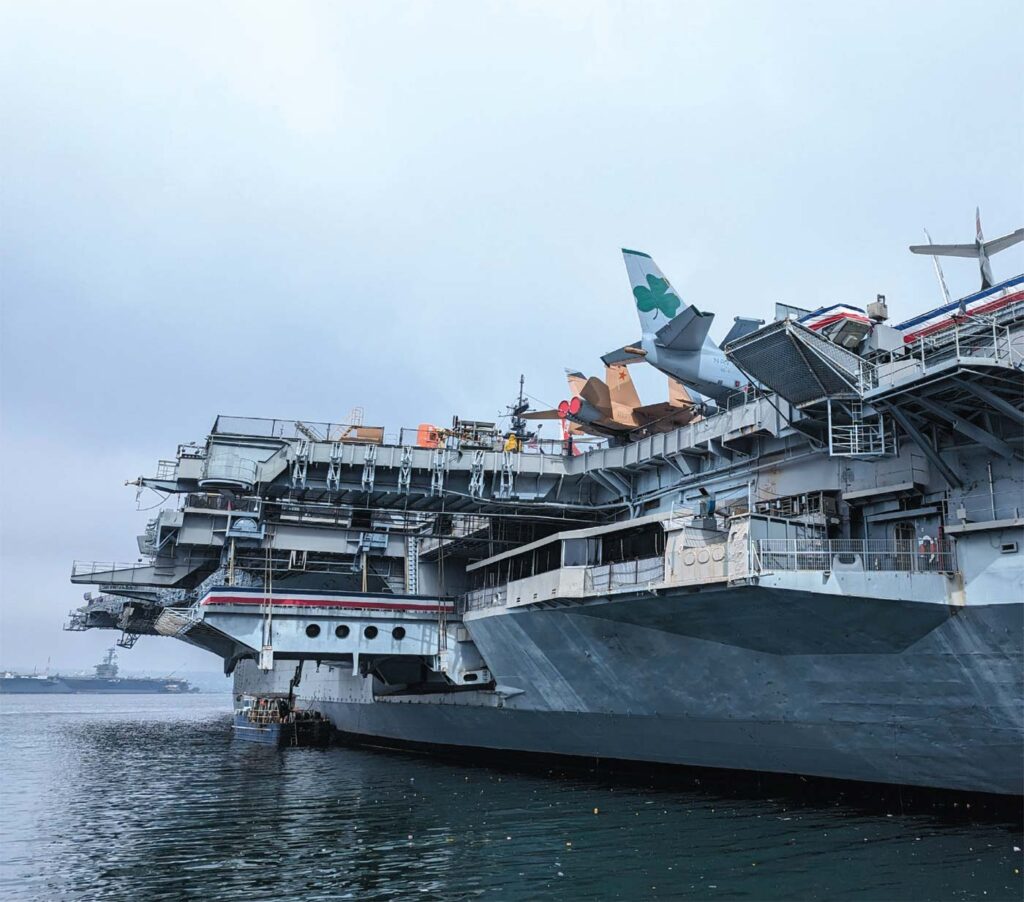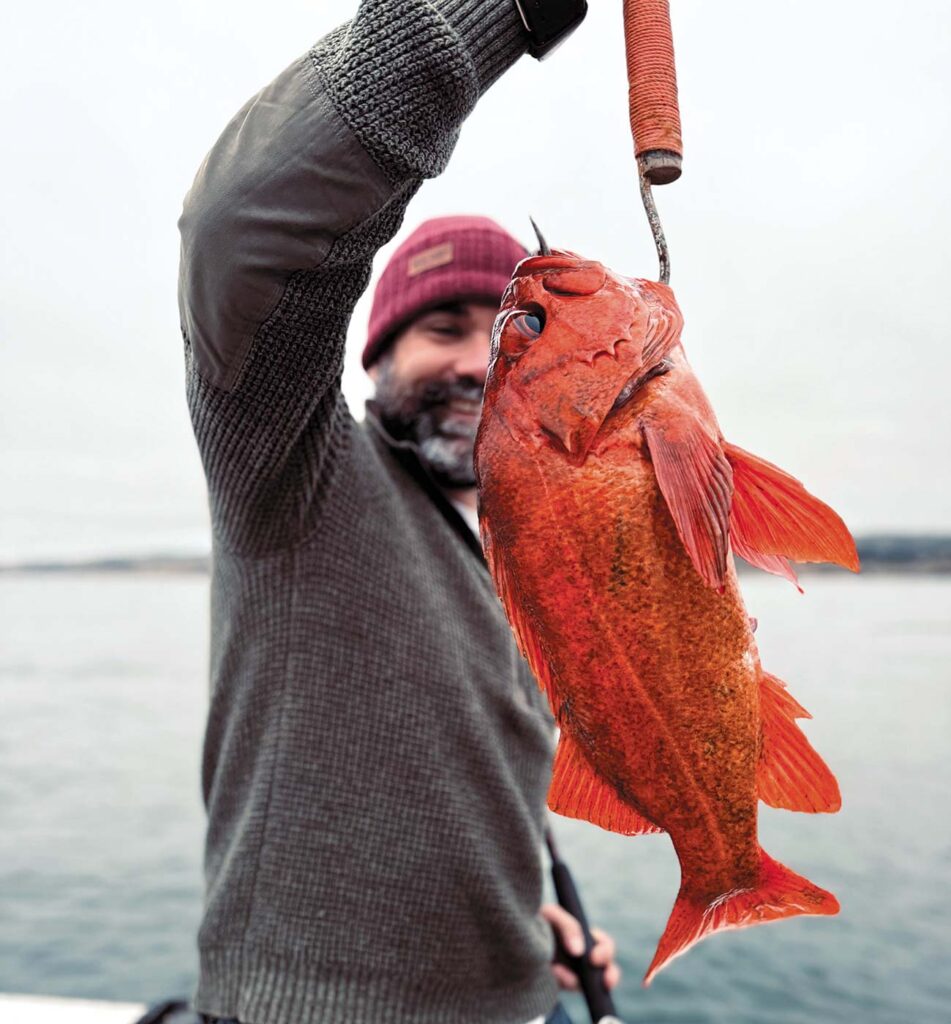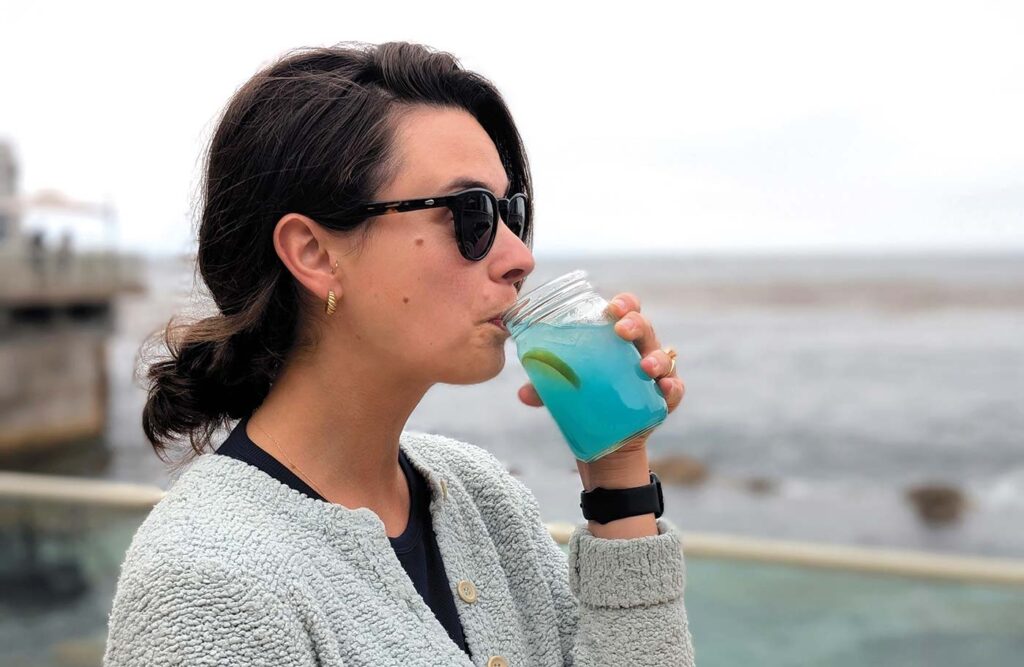Monterey Bay Aquarium and SSA Group make a monumental impact through food

You’ve seen a friend post a photo of their laptop on a beach with the caption, “My office for the day.”
Monterey-based chef Matt Beaudin can play that game.
As corporate director of culinary innovation at Denver-based SSA Group—which partners with Monterey Bay Aquarium on food and drink—his workplace can cover some ground.
One day he could be at the Hanauma Bay Nature Preserve in Honolulu; on another, in Rochester, NY, at the Strong National Museum of Play, which houses the world’s largest collection of video games. Or he might be visiting a full A-to-Z roster of zoos alone: 50 all told from Albuquerque BioPark to Zoo Miami. The SSA Group handles food service at all of them.
His main charge at each is to take things he’s studying, testing and/or workshopping in Monterey—whether compostable packaging or fish scraps transformed into dog treats—and offer them as options to other SSA sites.
“We’re looking for ways to push the envelope,” he says. “Better for you, better for the planet.”
A case study helps illustrate how it works. The 50/50 beef-mushroom burger at the Aquarium Café is already accomplishing a tidy triple play of reducing food costs, lowering environmental impacts and tasting fantastic—silky, juicy, unctuous at the same time, aided by secret-recipe “bay sauce.”
Where Beaudin figured the fungi would scare some off, sales actually doubled. “A burger with a purpose!” he says. “The idea is: Make it different, and make people think.”
Now Beaudin and Justin Robarge, a year-plus into his role as Aquarium executive chef (Beaudin’s previous post), have stumbled across a way to juice it up.
The fellow New Hampshire natives were on a mission to improve their raw juice program (through a partnership with Salinas-based Perfectly Pressed), so they were periscoping the process. Rather than compost the leftover pulp, they combined the carrot, beet and celery remains with their burger blend.
A smash, a sear and some vegetable sugar caramelization later—as the fibrous pulp absorbed the meat drippings—and the result was, per Beaudin, “too good to be true.’”
As this issue goes to press, the updated “75/25” burger is getting field tested against the 50/50 and a classic beef burger at the Aquarium Café, where visitor volume (2 million annually) allows for more experimentation and beta trials than elsewhere. “We learn what’s driving the decision,” Beaudin says. “Are people getting a burger just because they want a burger, or do they want something more?”
From there, the idea isn’t to tell other SSA kitchens, Hey, here’s the healthier recipe you’ll be using from now on. Instead it’s Here’s what we learned, the story it tells and how it landed.
“‘This worked for us, see if it can work for you,’” Beaudin says.
SSA’s site-specificity—“We partner individually, because each is unique,” Beaudin emphasizes more than once—balances with prodigious impact. All told, SSA partner venues welcome in 100 million visitors a year, more than the populations of Canada and South Korea combined.
“Our work is grounded in Monterey but has a much bigger reach,” Beaudin adds. A quick tour of SSA properties along the West Coast, from north to south and back to Monterey, help reveal other avenues that innovation takes.
SEATTLE
Where the experience envelopes
Composed of shimmering and swooping metal panels designed by Frank Gehry— to look like a smashed guitar, some say—MoPOP (Museum of Pop Culture) thumps visitors upon sight.
Then comes the Science Fiction & Fantasy Hall of Fame, the Sky Church’s 2,000-square-foot LED screen, and the pulsating and tornado-shaped “If VI Was IX” Sound Sculpture with 500+ musical instruments and 30+ computers working in harmony.
So there’s a lot to digest long before you get to Executive Chef Athan Pixler’s fennel-pollen-dusted purple clams, Washington butter flight, ricottatempura squash blossoms and braised Wagyu bone marrow (not to mention the Barbie Sparkle, Back in Black and Beyhive cocktails).
Beaudin believes MoPOP occupies a special place in SSA’s ecosystem given Pixler’s wild epicurean ambitions and drive to root them in 30 collaborations with local fishermen, growers and purveyors, like San Juan Island Sea Salt and the fermentation gurus at Firefly Kitchens.
“The audience there is made up of big dreamers, big thinkers, big concert lovers… and the food and flavors have to be as big as Biggie’s suit,” he says. “And Mo- POP does an incredible job of meeting the moment.”
As Pixler—and plenty others—characterize MoPOP as more than a museum, he’s after more than nutrition.
“People assume sustainability is expensive, but if you do it strategically, it actually makes better business sense,” he says. “The key is knowing where to invest and how to tell the story. Guests are willing to pay a little more for something that feels authentic, local to the region and meaningful.”

“People assume sustainability is expensive, but if you do it strategically, it actually makes better business sense.”
Over at Oakland Zoo’s Landing Café, chef specials like the Chick’n honey walnut sandwich and falafel “smash” burger give meat-free flavor ample runway.
OAKLAND
Where zoo food rises
The only way to The Landing Café at Oakland Zoo is a four-minute gondola ride that travels 1,780 feet of wire from the company of camels, giraffes and lions, climbing some 300 feet of panoramic views that stretch to San Francisco.
The only way dishes make it on the lineup of chef’s specials is through creativity and area purveyors like Simoni & Massoni Farms and County Line Harvest.
“It’s nice to offer something other than the normal, and spotlight how we procure the food,” says SSA Northern California Area Chef Peter Gregorio. “There’s nothing like the comment, ‘I never expected this, or would’ve thought about where it came from.’”
Make no mistake: SSA plays the chicken-tender-and-cheese-pizza hits like a veteran babysitter—albeit in more bespoke ways—and sells a lot of them. But each venue mandates a percentage of chef-driven dishes. For Gregorio that takes the shape of recent specials like plantbased Chick’n tikka masala “naan-chos” and charred street corn with cilantro-jalapeño aioli, grated cotija, tajin, smoked paprika, chipotle powder, chopped cilantro and crispy chorizo, ready for a walk around the grounds.
“We have a chance to change the perception of what can be offered,” he says.
Beaudin believes The Landing illustrates the impact of presentation. Seeing Gregorio’s boulder-of-a-falafel “smash” burger with whipped tzatziki feta is… believing. “With cultural attractions, you have a short period of time, so the wow of plating helps bring a story to life, highlighting ingredients in a way that wouldn’t be possible singularly,” Beaudin says. “When it goes from a solo and then the entire orchestra kicks in, you feel it in your body.”

SAN DIEGO
Where history floats
You could say The USS Midway is playing the long game. The dockside museum stretches 1,001 feet 6 inches in length. It’s the longestserving American aircraft carrier of the 20th century (1945–92). And for Beaudin, it allows him to reach back in his own lineage: Both of his grandpas served in the Air Force.
“You think about how many meals were served on that ship before we got there,” he says, “and now we are part of continuing that story.” While 10 acres of exhibits and 30 restored aircraft—an F-14 Tomcat, UH-1 Huey gunship and HUP Retriever helicopter among them—honor the past, SSA and its team also train their crosshairs in the other direction.
They were the first in decades to cook from the mess hall, where vintage menus describe midcentury meatloaf nights (which Beaudin wants to re-create), for Fourth of July celebrations and Top Gun: Maverick cast parties.
When active, the carrier had to run all-electric for fire safety. Today it remains electric to help test how SSA can deploy similar setups at other venues.
“So many lessons are exportable—especially over time,” Beaudin says, noting SSA started as a family concession. “The Midway aligns well with the broader mission: Know where you came from, but tell a bigger story, and keep moving forward.”


MONTEREY
Where collaborations collide
While Beaudin digs working venue to venue, his ideal “office” lies elsewhere.
“Being in the field is where I pull my passion from,” he says. “Being in the kitchen is where I put it into action.”
On a recent trip he surveyed the cocoa process in West Africa, as part of a partnership with Oakland-based TCHO—which sources there—to hatch chocolate bar collaborations like the Pop Rocksspiked Culture Shock (for MoPop) and the blackberry-infused Grizzly Berry (for Oakland Zoo).
Another fresh expedition visited a shrimp farm in Vietnam’s mangroves to understand how best practices protect habitat for native species, humans included.
“I want to tell a story from the heart rather than from Google,” he says.
Those Seafood Watch green-rated shrimp go into a dish layered with tasty talking points. There are so many, and corresponding relationships, Exec Chef Robarge nicknamed them “collaboration nachos.”
There’s bulb kelp pickles and chili crisp from new partner Barnacle Foods, whose creator happens to be a marine biologist and son-in-law to an Aquarium volunteer who turned Beaudin on to the conservation-forward brand.
There’s the green-rated salmon from sustainable superstars Oro King, whose skins are dehydrated by Pacific Pet Treats up the street to be sold as crispy dog treats in the café.
There’s the red dulce “sea-chi,” a take on kimchi using Monterey Bay Seaweeds red dulce by Moss Landing Marine Labs marine ecologist Mike Graham, whose kelp the Aquarium was the first to feature. Then there’s the “mangrove shrimp,” labeled simply to evoke curiosity.
“It gives us the opportunity to have the conversations,” Beaudin says.
At a recent lunch—even among a knockout lineup of cioppino, seafood-chicken-sausage paella, 50/50 burger, incredible poke bowl with kelp crackers and surprising cocktails (see below)—the nachos stood out.
But the Thai-style whole roasted rockfish—ungreasy, expertly salted and beautifully arranged—draws the most nodding heads from the table.
That comes from yet another relationship, this one with community-supported fishery Real Good Fish of Moss Landing, who Beaudin fished with this summer to participate in the process alongside founder Alan Lovewell.
“We’re lucky to be working with people who are obsessed with their food, not just for the flavor, not the culinary innovation, but its provenance, the experience, getting your hands dirty and understanding how it comes to be in front of you,” Lovewell says.
“Matt and I both like working at different scales—locally, with roots in this fishing community and industry, but with an interest, and passion, and intentions, to create global change, as hard as that is.”
Beaudin admits that as a young chef his focus was elsewhere.
“It was about me and my story,” he says. “Now I’m most concerned with how we tell the stories of partners—how do we look less at what’s new on the menu and more at what partnerships we have developed?”
In other words, just another day at the office.
Mark C. Anderson, Edible Monterey Bay’s managing editor, often wishes he could teleport to Food Street in Kuala Lumpur for lunch.

DRINKING WITH THE FISHES
Margaritas with moon jellies. High Tides at the Great Tide Pool. Palomas with the penguins.
As Edible Monterey Bay first reported in its free foodEnewsletter this summer, the Monterey Bay Aquarium has introduced a concierge cocktail bar program that allows guests to roam the 200,000 square feet of public exhibits with a resealable and reusable jar.
Like many of the innovations that find expression under SSA’s guidance, the nexus for the program was practical.
SSA’s kitchen team had an unused space in the back corner of the dining area. Aquarium Exec Chef Robarge threw out the idea. Culinary GM Rachel Schanding helped design the menu and… splash!
Now you can take a batchmade Packard Pledge (Patron silver tequila, triple sec, Meyer lemon and honey thyme syrup) to toast a sevengill shark.
About the author
Mark C. Anderson, EMB's managing editor and "Found Treasures" columnist, welcomes responsible and irresponsible feedback. Correspond via mark@ediblemontereybay.com.
- Mark C. Andersonhttps://www.ediblemontereybay.com/author/markcanderson/
- Mark C. Andersonhttps://www.ediblemontereybay.com/author/markcanderson/
- Mark C. Andersonhttps://www.ediblemontereybay.com/author/markcanderson/
- Mark C. Andersonhttps://www.ediblemontereybay.com/author/markcanderson/



